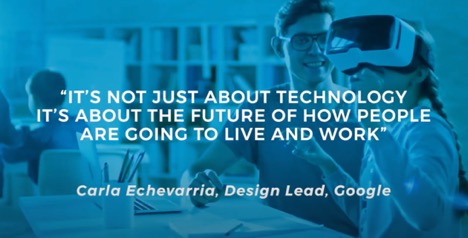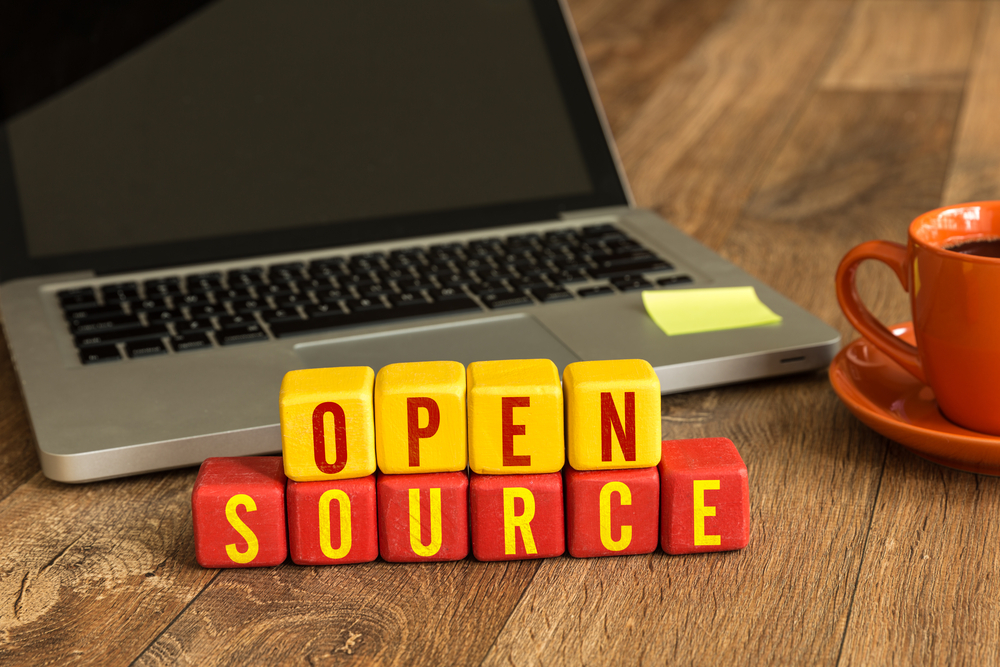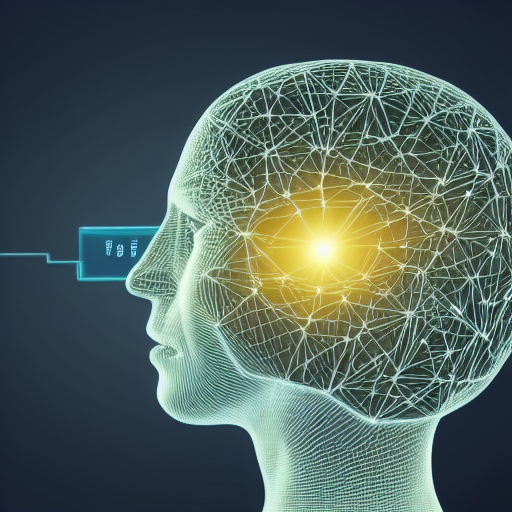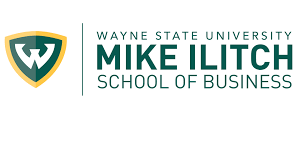Discussion of 'BA 7060: Understanding Emerging Technologies' Expectations
You're Somebody Else
"It's like you told me, 'Go forward slowly.' It's not a race to the end."
- Song -- You're Somebody Else (Acoustic)
- Artist -- Flora Cash

BA 7060: Understanding Emerging Technologies
As you start BA 7060, remember to "Go forward slowly. It's not a race to the end." There are many interesting topics to explore and learn.
Welcome to the Future! (3:13)
As you earn your MBA, you will have an opportunity to explore the "Emerging Trends in Business Technologies" during your core BA 7060 course.
Topics include Quantum Computing (QC), Artificial Intelligence / Machine Learning (AI/ML), Jasper, Chatbots and Knowledge Bases, Programming tools (Python), Community, and Business Intelligence (BI) reporting capabilities.
Emerging Technology Pillars
In this course, you will have an opportunity to explore the "Emerging Trends in Business Technologies" . The four pillars that help define and categorize emerging technologies include: 1) Immersive Interface, 2) Organizational Transformation, 3) Transparency and Automated Trust, and 4) Integration and Digital Reflections. There are multiple emerging technologies in each of these pillars. From those pillars, we will dive deeper in topics include Web3, Programming Languages, Quantum Computing (QC), Artificial Intelligence / Machine Learning (AI/ML), and Business Intelligence (BI) reporting, Chatbots, and Knowledge Bases capabilities.

Immersive Interface
- 3D Printing
- 5G Technology
- Augmented Reality
- Extended Reality
- Virtual Reality
- Internet of Things (IoT)
- Metaverse
- Robotics Process Automation
- Orientation:
Web3/Community

Organizational Transformation
-
- Pillar 2:
Artificial Intelligence /
Machine Learning
- Pillar 2:
- Deep Learning
- Pillar 3:
Quantum Computing - Pillar 4:
Programming Languages - Mobile Development

Transparency & Automated Trust
- Blockchain
- Pillar 1:
Business Intelligence - Chatbots
- Dashboards
- Knowledge bases

Integration & Digital Reflections
- Cloud computing technology
- Datafication processes
- Personalization services
- Presence-tracking software applications
- Social media research platforms
- Visualization tools
- Website development solutions
Emerging Business Technologies
Blockchain
Blockchain technology is a distributed database that allows for secure, transparent, and tamper proof transactions. Thus, it is a digital ledger of all cryptocurrency transactions. Each block contains a cryptographic hash of the previous block, a timestamp, and transaction data. By creating a shared ledger that cannot be altered, blockchain provides a platform for trustless digital interactions.
Blockchain is related to digital trust because it allows for secure and transparent transactions without the need for a third party. This new form of trust is based on mathematics and cryptography instead of reliance on central authorities. As an emerging technology, blockchain is still in the early stages of development and adoption. However, it has the potential to revolutionize many different industries by redefining how we interact with each other and with the digital world.
Cloud Services / Computing
Cloud computing is a term that covers a wide range of services and technologies. In general, cloud computing is a term that describes the process of storing and accessing data and programs over the internet and generally refers to the use of remote resources that are typically hosted on the internet. These processes can include everything from email and file storage to more complex tasks such as website hosting and data processing. There are many different cloud service providers, each offering a different set of services. Common cloud services include software as a service (SaaS), platform as a service (PaaS), and infrastructure as a service (IaaS).
Cloud computing is an emerging business technology, with more and more businesses turning to cloud-based solutions to meet their needs. Its popularity is due to the many benefits it offers, such as flexibility, scalability, and cost-efficiency. For businesses, the cloud can provide a powerful and versatile platform for innovation and growth.
Data Visualization
Data visualization is a process of representing data in a visual format. This can be done using various techniques, such as charts, graphs, infographics, and maps. As data sets have become larger and more complex, traditional methods of data analysis have become less effective. Data visualization is often used to help people understand data sets that are too large or complex to be easily interpreted. It can also be used to highlight trends and patterns that would otherwise be difficult to see. Data visualization is an essential tool for businesses and organizations that want to make better decisions based on data.
3D Printing
3D printing is a process of making a three-dimensional solid object from a digital model. 3D printing is achieved using an additive process. For example, a 3D printer can print a plastic cup by depositing successive thin layers of plastic one on top of the other until the cup is formed. The digital model can be created using 3D modeling software or by scanning an existing object. Once the digital model is ready, it is sent to a 3D printer which then builds the desired object layer by layer. Many materials such as plastic, metal, and even human tissue can be used in 3D printing. With this technology, complex objects can be created quickly and accurately with minimal waste. 3D printing is already being used to create custom medical implants, airplane parts, special tools for manufacturing, complex architecture, and much more. 3D printing has the potential to revolutionize many industries as it can reduce production costs and lead times significantly.
This 3-D Printed Icelandic Fish-Gutting Machine Contains the Secret of a Future, Less-Globalized Economy: https://www.wsj.com/articles/3-d-printing-iceland-fish-supply-chains-desktop-metal-11673642250
Augmented Reality / Extended Reality / Virtual Reality
Augmented Reality (AR), Extended Reality (XR), and Virtual Reality (VR) are all immersive technologies that allow users to interact with digital content in a real-world environment. Augmented Reality is a form of technology where digital content is overlaid on the physical world. It uses cameras, sensors, and other devices to capture the user’s real-world environment and then display digital content in it. An example of Augmented Reality is the popular game Pokemon Go, where players can capture virtual monsters as they move around their physical environment. Extended Reality (XR) combines both virtual reality and augmented reality to create immersive experiences that are more interactive than either of them alone.
Chatbots / Knowledge Bases
Chatbots are computer programs that simulate conversation with a human user. They can answer questions, act as virtual assistants and provide customer service. They are powered by natural language processing (NLP) and artificial intelligence (AI). They can understand the user's intent behind their queries and respond appropriately. The knowledge base that is used by a chatbot helps it to understand the context of conversations and identify relevant information. For example, a banking chatbot can provide answers to customer queries related to account balance, loan offers, etc., by referring to its knowledge base which contains data about various banking products and services.
 -Generative AI
-Generative AI
Generative AI is an emerging technology that is quickly becoming an immensely powerful tool. Generative AI can be used for a variety of tasks, from creating more natural-sounding chatbots that can retain information, learn different topics, and respond appropriately to creative writing. It brings new levels of interactivity and creativity instead of just relying on established answers in a chatbot. Thus, with generative AI it is possible to create automated content that mimics human behavior, making it difficult to tell what was written by an actual person and what was generated by a generative algorithm. This process approaches this by using an algorithm that can assess input to generate relevant and potentially novel outputs; these could range from anything from natural language recognition to compelling compositions of sound and music. Most generative AI also gains experience as it operates, bettering its performance over time, often faster than humans can improve themselves.
Take a look at ... ChatGPT
Internet of Things (IoT)
The term "Internet of Things" (IoT) has been around for a while, but what does it actually mean? At its core, the "Internet of Things" is the network of physical objects that are connected to the Internet. This could be anything from your refrigerator to your car. And as more and more devices get connected to the Internet, we're starting to see a whole new realm of possibilities open up.
One example of this is the so-called "Internet of Behaviors." This is where all of our devices start communicating with each other and collecting data about our behavior. For example, your car might know how many miles you drive each day and how fast you drive. Your refrigerator might know how much milk you drink and when you tend to run out of groceries. All this data can then be used to help us make better decisions in our lives.
Another example is so-called "smart devices." These are devices that have sensors built into them which allow them to collect data about their surroundings. For example, a smart thermostat might be able to tell whether someone is home or not based on whether or not there's movement in the house. This data can then be used to adjust the temperature accordingly.
Metaverse
The metaverse is a network of 3D virtual worlds designed to facilitate social connection. It offers users the opportunity to explore, interact, and create in a dynamic and immersive environment. Through their avatar, users can virtually experience various activities and connect with others on a global scale. The metaverse has become increasingly popular in recent years as it provides users with a unique way to experience entertainment, art, and education. With its vibrant visuals and streamlined user interface, the metaverse allows users to quickly explore different areas of interest and make meaningful connections with other users from around the world. This social platform can be used for gaming, exploring new cultures, constructing virtual objects and buildings, or simply chatting with friends. From its beginnings as a social platform, the metaverse has grown to become an expansive network of immersive experiences that can provide endless entertainment and opportunities for exploration.
Web3
Web3 is still evolving and being defined. Web3 has been defined as the internet owned by the builders and users, orchestrated with tokens.
Note that we are witnessing one of the largest transformations of wealth in human history—from paper-based analog assets to digital ones. Blockchain represents the first native digital medium for value, and is foundational to the next generation of the Internet—also known as Web3.
Web 3 is the third generation of the web and emphasizes decentralization, privacy, and autonomy. It moves away from centralized systems that control information flow and instead utilizes distributed ledgers to facilitate interactions between users without needing a middleman. Web 3 also places greater importance on personal data privacy, meaning that users can choose which data they share and who they share it with. Furthermore, Web 3 empowers users to have full control over their data as well as their online identity. Web 3 could revolutionize how we interact with the internet, transforming it into an open, secure platform for everyone to use. Developers are already looking into ways to use blockchain technology, decentralized finance (DeFi), and other tools to bring these advancements to the world.
Edge Computing
Edge computing is a revolutionary technology that enables the processing and analysis of data close to where it is being generated, rather than in a centralized data center. It offers the advantage of reducing latency and increasing performance, as well as providing a more secure environment for data storage and processing. With edge computing, businesses can create highly efficient systems that minimize bandwidth use, reduce reliance on the cloud, and leverage local resources to drive faster analytics results. Edge computing stands to revolutionize many industries in coming years as businesses adopt this enhanced approach to data management.
Robotics Process Automation
Robotic Process Automation (RPA) is a technology that enables computers and robots to automate a variety of tedious tasks. By deploying RPA solutions, businesses can automate processes such as data entry, data processing, document management, customer service tasks, financial transactions, and more. RPA leverages artificial intelligence (AI) to recognize and interpret existing applications for automation potential. It also improves workflow efficiency and accuracy by reducing the need for manual labor. This technology helps increase organization productivity while reducing costs associated with labor-intensive activities.
Natural Language Processing
Natural Language Processing (NLP) is an AI technology that enables machines to understand, interpret and analyze natural language data. NLP is powered by a combination of machine learning algorithms, data science and linguistics. Using sophisticated techniques such as sentiment analysis, topic modelling and semantic search, NLP helps machines process large amounts of unstructured text data and extract valuable insights from it. Those insights can be used by businesses to gain a better understanding of their customers' needs, improve customer service and enhance overall decision making. Thus, by incorporating NLP into business operations, businesses can reap the following benefits:
- Increased Efficiency: NLP automates tedious tasks such as text analysis, thereby saving time and resources.
- Improved Accuracy: NLP algorithms are highly accurate, providing more precise results than manual text analysis.
- Comprehensive Insights: NLP enables businesses to gain deeper insights from customer feedback, conversations, emails and more.
- Cost Savings: Automating text analysis with NLP reduces labor costs associated with manual processes.
- Enhanced Customer Experience: Understanding customer intent through NLP helps companies anticipate their needs better, resulting in improved customer service and satisfaction.
Conversational AI
Conversational AI is an intelligent system that enables machines to understand and respond to natural language input. It is powered by advanced algorithms that process large amounts of data in order to identify user intent and reply accordingly. This type of AI technology can be deployed through customer service chatbots, virtual assistant apps, voice-enabled devices and more. By leveraging conversational AI, businesses can create highly personalized experiences for their customers while reducing labor costs associated with manual customer service tasks.
Digital Wallets
Digital Wallets are digital services that enable people to store, exchange and manage their money electronically. They act as virtual substitutes for traditional wallets and provide a secure platform to make payments without having to use cash or credit cards. Digital Wallets typically come with features such as automated budgeting, contactless payments, custom rewards programs, and payment tracking capabilities. This type of technology is not only convenient but also safer than traditional methods of payment, allowing users to make secure transactions anytime and anywhere. Digital Wallets are becoming increasingly popular with consumers looking for a convenient and secure way to manage their finances. With the rise of mobile technology, more people than ever are turning to digital wallets as the preferred method of payment.
5G
Thus, 5G has the potential to revolutionize the world of manufacturing. This next-generation wireless technology is ideal for industrial automation. 5G can be used in a variety of ways to make production processes faster, more reliable and cost-effective. For example, its high data throughput capabilities enable real time control of factory production line machines; it allows better monitoring and diagnostics of machines; and its low latency makes feedback loops quicker and more responsive to changing market dynamics. Furthermore, the ability to support massive numbers of connected devices means manufacturers can take advantage of increased levels of collaboration across their supply chain partners and create smarter factories that respond quickly to customer demands. Ultimately, 5G technology will usher in a new era for manufacturing as businesses strive for faster, more efficient processes and products.
What is 5G?
https://www.mckinsey.com/featured-insights/mckinsey-explainers/what-is-5g
Additional Resources
- Agency M-1: https://so.ilitchbusiness.wayne.edu/en/en/agency-m-1-home
- Big Data and AI-Driven Marketing Analytics: https://so.ilitchbusiness.wayne.edu/big-data-and-ai-driven-marketing-analytics
- Chatbot / Knowledge base by HubSpot: https://academy.hubspot.com/lessons/chatbots-in-hubspot
- HubLMS by Impulse Creative: https://hublms.io/
- ISM Faculty: John H. Heinrichs: https://ilitchbusiness.wayne.edu/profile/ai2824
- ISM Faculty: Yuxin Zhang: https://ilitchbusiness.wayne.edu/profile/hg0142
- ISM Faculty: Ahmed Mohamadean: https://ilitchbusiness.wayne.edu/profile/hn0916
- Knowledge Base: https://so.ilitchbusiness.wayne.edu/knowledge
- MIT - Quantum Computing Fundamentals: https://learn-xpro.mit.edu/quantum-computing
- Quantum Realm from CalTech: https://iqim.caltech.edu/quantime/
- Quantum Chess: https://quantumchess.net/
- Quantum Machine Learning: https://www.pyqml.com/
- Quantum Tiq-Taq-Toe: https://quantumtictactoe.com/
- In us we trust: Decentralized architectures and ecosystems: https://www2.deloitte.com/us/en/insights/focus/tech-trends/2023/trustless-blockchain-decentralized-internet.html
- Tech highlights from 2022—in eight charts: https://www.mckinsey.com/capabilities/mckinsey-digital/our-insights/tech-highlights-from-2022-in-eight-charts
